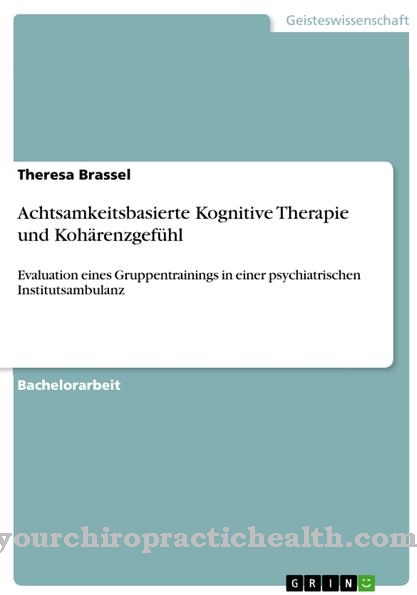The axillary blockage is a partial anesthetic procedure for numbing the upper extremity. The nerve plexuses supplying the arm are anesthetized and the transmission of stimuli is blocked. This enables surgical interventions in the field of orthopedics and surgery, as well as very effective pain therapy.
What is the axillary block?

The axillary blockade is a regional anesthetic procedure, which is also known as Plexus anesthesia is known. By blocking the nerves in the armpit area, it is possible to perform surgical interventions on the upper extremity. To achieve such a blockage, an anesthetic, a so-called anesthetic, is injected into the area of the nerve plexus in the armpit.
The nerves of the brachial plexus, consisting of the ulnar nerve, radial nerve, median nerve and the musculocutaneous nerve, are briefly anesthetized. Transmission of stimuli is not possible. The sensitivity and especially the feeling of pain are canceled. In addition, the muscles in the arm are paralyzed. It is also possible to place a catheter in the area of the brachial plexus in order to continuously inject anesthetic postoperatively for pain therapy. This is a great advantage compared to other anesthesia methods, as this postoperative pain therapy can be carried out for any length of time, depending on the patient's pain condition, using the plexus block.
Function, effect & goals
The axillary block allows surgical interventions on the distal upper arm, elbow joint, radius / ulnar, wrist and the hand with fingers. In addition to its application in the surgical field, the axillary block is also used for pain therapy. A catheter is placed in the puncture site and anesthetics are continuously injected postoperatively. Such pain treatment is often indicated for chronic pain, CRPS (complex regional pain syndrome), neuralgia and phantom pain.
There are four different techniques for axillary blockade. The oldest technique used is the supraclavicular plexus block. Here the brachial plexus above the clavicle is blocked with anesthetics. The advantage of this method is that almost all nerve cords leaving the brachial plexus are blocked. The standardized and therefore most common technique of axillary blockade is the so-called axillary plexus blockade. The anesthetic is injected into the vascular nerve sheath of the brachial plexus. The advantage of this method is the easy access via the axilla to the brachial plexus. Therefore, this procedure is also often used in children.
During a surgical intervention in the area of the shoulder joint, the so-called interscalene blockade is carried out. The anesthetic is injected at the level of the 6th cervical vertebra between the M. scalenus anterior and the M. scalenus medius. Here, too, the brachial plexus is analized. The infraclavicular plexus block is rarely performed. Here the anesthetic is placed between the clavicle, the pectoralis muscle and the proc. coracoid injected. However, this technique is still relatively young and further studies have not yet been carried out.
In order to track down the brachial plexus, a so-called nerve stimulator is attached to the end of the puncture cannula. If the tip of the cannula gets into the area of the nerve plexus, this is expressed by contractions of the forearm muscles. Alternatively, the puncture cannula can also be inserted using an ultrasound.
If the anesthetic is injected into the brachial plexus with the help of a nerve stimulator, about 40 ml of anesthetic is introduced. Long-acting local anesthetics such as ropivacaine are usually used for this. However, since the effect usually only takes place after 20-30 minutes, a local anesthetic such as prilocaine or mepivacaine that acts quickly and for a short time can also be administered.
If the patient is nervous, restless, or stressed by the surgery, sedating medication can be administered. The patient falls into a twilight state and can be awakened again at any time.
You can find your medication here
➔ Medicines for painRisks, side effects & dangers
With regard to alternative forms of anesthesia, axillary blockade is a relatively safe and gentle anesthetic. Side effects such as nausea, vomiting, hoarseness or dry cough, which can occur with general anesthesia, are eliminated with local anesthesia.
However, there are typical side effects of axillary blockade. This can be, for example, numbness, muscle tremors and tingling in the operated arm. Sensory disturbances of this kind can be caused by the anesthesia or by the blood congestion cuff. Experience has shown that these complaints will subside for a few more weeks. In addition, there may be bleeding into the tissue in the area of the puncture site. In rare cases, soft tissue damage or nerve irritation occurs.
This can also lead to sensory disturbances in the form of paresthesia, numbness, pain or paralysis due to damage to the nerves. Hypersensitivity or an allergic reaction to the injected anesthetic can manifest itself as a drop in blood pressure and pulse. If the anesthetic is inadvertently injected into the bloodstream, it can lead to cardiovascular complaints, loss of consciousness, seizures and even stopping breathing.
Therefore, axillary block should not be performed if such an allergy or hypersensitivity is known. A long-term blockage of the transmission of stimuli through a catheter can lead to symptoms of intoxication. These manifest themselves in dizziness, nervousness, seizures, cardiac arrhythmias or a sudden drop in blood pressure.
When inserting the puncture cannula, blood vessels can also be damaged because the plexus runs through them. Infections and tumors in the arm area are absolutely contraindicated. Blood clotting disorders and the use of medication should be discussed with the anesthetist before the operation. It may be necessary to stop medication in order to perform the procedure.
















.jpg)
.jpg)



.jpg)






